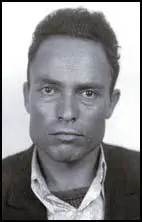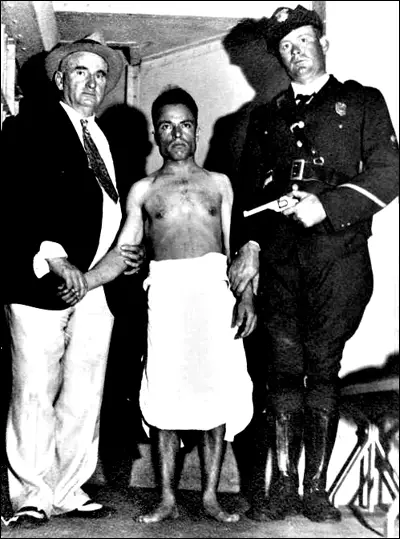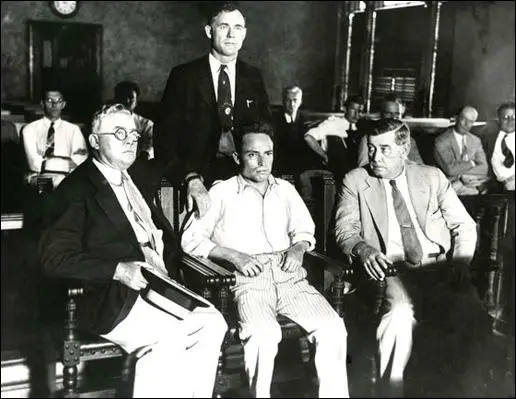Giuseppe Zangara

Giuseppe Zangara was born in Ferruzzano, Italy, on 7th September, 1900. His mother died when he was two years old and his father remarried a woman who already had six children. At the age of six he started school but after two months he was forced to go to work to help improve the family income. (1)
Zangara did a variety of menial jobs in Italy emigrating with his uncle to the United States in 1923. He secured a job as a bricklayer in New Jersey. During this period he made $12 to $14 a day and managed to save $3,000. (2)
Zangara moved to California where he hoped the warmer climate would improve his health. Zangara then settled in Miami, Florida, where he worked as a bricklayer. He found it very difficult to find work during the Great Depression and developed a strong hatred of President Herbert Hoover, who he blamed for his problems. When Franklin D. Roosevelt defeated Hoover in 1932, Zangara turned his anger towards the new president. (3)
Guiseppe Zangara in Miami
Zangara gambled away his savings and it was later discovered he lost $200 on horse-races over a couple of days. On 13th February, 1933, Zangara read that Roosevelt was to visit Bayfront Park two days later. Zangara bought a .32 caliber pistol for eight dollars from a pawnshop on North Miami Avenue and joined the crowd who had gathered to hear the President elect speak at the meeting. (4)
Anton Cermak the major of Chicago, was also at Bayfront Park. James Bowler, another senior politician from the city, later recalled: "Mayor Cermak and I had gone to the park twenty minutes before the President elect was due to arrive, and we sat in the band shell together. When Mr. Roosevelt's car came along the President elect saw the mayor and called to him to come down. Mr. Cermak called back that he would wait until after Mr. Roosevelt had made his speech. Then Roosevelt spoke, and he waited until the mayor came down from the platform to go to the side of the automobile." (5)
Roosevelt explained how after the speech "I slid off the back of the car into my seat. Just then Mayor Cermak came forward. I shook hands and talked with him for nearly a minute. Then he moved off around the back of the car. Bob Clark (one of the Secret Servicemen) was standing right behind him to the right. As he moved off a man came forward with a telegram... and started telling me what it contained. While he was talking to me, I was leaning forward to the left side of the car." (6)
Assassination of Anton Cermak
Zangara was only 5 feet tall, and had difficulty seeing his proposed victim. He therefore climbed on top of an old unstable wooden chair and pointed his gun at Roosevelt. At the critical moment an alert spectator, Lillian Cross, hit the Zangara's arm with her handbag and spoiled his aim. Zangara fired five shots and they all missed Roosevelt, but did hit people close to him. This included Cermak who received a serious wound in the abdomen. Rex Schaeffer, a journalist working for the Brooklyn Daily Eagle reported: "I stood twenty-feet behind the car of the President-elect. Suddenly - I had given my attention to Mr. Roosevelt - a pistol blasted over my shoulder... Four more shots were fired and at the left of the car of Mr. Roosevelt I saw Mr. Cermak slump down." (7)
Zangara was attacked by the crowd. "He was seized by men and women, dragged between the rows of seats, and then a policeman rushed through the crowd and swung on him with his blackjack. The Sherriff of Dade County, Dan Hardie, was on the platform and as the shots rang out he plunged into the crowd after the shooter, and with the policeman, jerked him erect and threw him on the trunk rack of a defective automobile which was carrying one of the wounded out of the park." (8) Another witness remembers shouts of "Kill that man!" and "Don't let him get away". (9)

L. L. Lee was standing next to Cermak when he was shot. He claimed that his only words were, "The president! Get him away!" Lee and W. W. Wood, a Democratic county committee member, grabbed his arms and walked him towards the president's car." The chauffeur decided to get away from the scene as quickly as possible. Lee then heard Roosevelt shout "For God's sake a man has been shot" and the "car jerked to a sudden stop." (10)
Roosevelt told the New York Times: "I called to the chauffeur to stop. He did - about fifteen feet from where we started. The Secret Service man shouted to him to get out of the crowd and he started forward again. I stopped him a second time, this time at the corner of the bandstand, about thirty feet further on. I saw Mayor Cermak being carried. I motioned to have him put in the back of the car... Mayor Cermak was alive but I didn't think he was going to last. I put my left arm around him and my hand on his pulse, but I couldn't find any pulse... For three blocks I believed his heart had stopped. I held him all the way to the hospital and his pulse constantly improved." (11)
After the shooting Roosevelt remained at Jackson Memorial Hospital in Miami until Cermak was brought out of the emergency room. He spoke with him for several minutes and then visited the other shooting victims. According to the New York Tribune, an unnamed witness heard Cermak tell Roosevelt: "I'm glad it was me and not you, Mr. President." (12)

Anton Cermak died three weeks later on 8th March, 1933. Giuseppe Zangara, claimed he acted alone. "I have always hated the rich and powerful. I do not hate Mr. Roosevelt personally. I hate all presidents, no matter from what country they come." After being found guilty was sentenced to death in the electric chair at the Florida State Penitentiary. When he heard his sentence he yelled at the judge, "You give me electric chair. I no afraid of that chair! You're one of capitalists. You is crook man too. Put me in electric chair. I no care!" Guiseppe Zangara was executed on 20th March, 1933. (13)
The Chicago Mafia
Some political commentators such as Walter Winchell believed that Cermak was the real target. It was argued that Al Capone or William Hale Thompson had hired Zangara to assassinate Cermak. However, Blaise Picchi, the author of The Five Weeks of Giuseppe Zangara: The Man Who Would Assassinate FDR (2003) argued: "Federal agents conducted an exhaustive investigation of the shooting and could not find no link between Zangara and the Chicago mob." (14)
Cermak's biographer, Alex Gottfried, is also convinced that Cermak was not an hired gunman: "What actually seems to be the case, is that, regardless of what connections might have existed between Cermak and Chicago gangdom, the shooting was neither planned by gangsters nor executed by a gangster hireling. The one way ride, the machine gun tattoo, the shotgun blast - these are their customary and foolproof methods. No plot similar to this shooting is recorded in the annals of gang murder." (15)
In 1950 J. Edgar Hoover, the head of the FBI, was asked to report on the original investigation into the case: "The Secret Service files reflected that there were many allegations, most of which were in the form of anonymous letters, that the attempted assassination was planned by gangsters or some organised criminal group, and that Zangara had been sent to Miami expressly for that purpose. Subsequent investigation, however, indicated that he had been in Miami for several months prior to the incident. There is no indication that Zangara had any knowledge as to the identity of Mayor Cermak of Chicago... There was no evidence that Zangara had been in Chicago nor had any relatives or associates in the city." (16)
Primary Sources
(1) L. L. Lee, Miami Daily Herald (16th February, 1933)
The killer had apparently discharged two bullets from his revolver before anyone realized what was happening. But then someone struck his hand upward and still he continued to shoot the revolver raised on high but pointed downward. He was seized by men and women, dragged between the rows of seats, and then a policeman rushed through the crowd and swung on him with his blackjack. The Sherriff of Dade County, Dan Hardie, was on the platform and as the shots rang out he plunged into the crowd after the shooter, and with the policeman, jerked him errect and threw him on the trunk rack of a defective automobile which was carrying one of the wounded out of the park.
Student Activities
Economic Prosperity in the United States: 1919-1929 (Answer Commentary)
Women in the United States in the 1920s (Answer Commentary)
Volstead Act and Prohibition (Answer Commentary)
The Ku Klux Klan (Answer Commentary)
Classroom Activities by Subject
